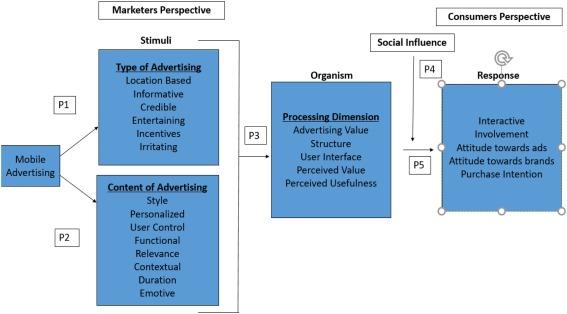Emerging Sustainable Technologies Transforming Educational Settings: A Guide to Greener Learning
Teh future of education is greener, smarter, and more sustainable than ever before. As learning environments evolve, the integration of sustainable technologies in educational settings has become a top priority for schools, universities, and e-learning platforms worldwide. By adopting eco-friendly solutions, educational institutions substantially reduce their carbon footprint, lower operational costs, and nurture a new generation of environmentally conscious learners.
In this complete guide,you’ll discover how emerging sustainable technologies are transforming the educational landscape,explore real-world examples,and gain actionable tips on implementing green learning solutions in your own institution.Let’s embark on a journey towards a more responsible and future-ready framework for learning.
Why Sustainability in Education Matters
Educational institutions play a critical role in shaping society. By embracing sustainability, schools and universities can:
- Reduce environmental impact and operational costs
- Promote environmental literacy and responsibility among students
- Enhance students’ well-being through healthy, green campuses
- Comply with global environmental regulations and community expectations
- Boost institutional reputation and attractiveness for eco-conscious learners
“Sustainable education goes beyond curriculum—it shapes the very environment in which students learn, inspiring a lifelong respect for the planet.”
Key Emerging Sustainable Technologies in Education
Driven by innovative solutions, the education sector is witnessing rapid adoption of technologies that promote greener, smarter learning. Here are some of the most influential sustainable technologies transforming educational settings:
1. Solar and Renewable Energy systems
- Solar Panels: Schools leverage solar arrays on roofs and campuses, drastically cutting electricity costs and emissions.
- Wind and Geothermal: Some institutions utilize wind turbines or geothermal heat pumps for clean energy and efficient climate control.
- Smart Grids: Real-time energy monitoring for maximum efficiency and eco-friendly energy distribution.
2. Green Building Design & Smart Architecture
- LEED-Certified Construction: New school buildings are designed for energy efficiency, natural lighting, and sustainable materials.
- Living Walls & Green Roofs: These installations provide natural insulation and improve air quality while promoting environmental learning.
- Automated HVAC & Lighting: Smart sensors reduce energy waste by controlling lighting and climate systems based on occupancy.
3. digital Learning Platforms and Paperless Classrooms
- Learning Management Systems (LMS): Virtual classrooms minimize the need for paper, travel, and physical infrastructure.
- Cloud Computing: Enables resource sharing, reduces data center emissions, and facilitates remote learning.
- e-Textbooks and Digital Resources: Electronic materials replace paper-based textbooks, significantly reducing resource consumption.
4. Sustainable Technology in EdTech Devices
- Energy-Efficient Devices: Tablets, projectors, and computers with energy-saving certifications (e.g., ENERGY STAR).
- Device Recycling and E-Waste Programs: Proper recycling and upcycling of devices minimize landfill impact.
- Modular, Upgradeable Hardware: Devices designed for longer lifespans and easy repair.
5. Water and Resource management innovations
- Smart Irrigation & Low-Flow Fixtures: Automated systems for efficient water usage on campuses.
- Rainwater Harvesting: Collected water supports landscaping and reduces reliance on municipal resources.
Benefits of Greener Learning Environments
- Reduced Operational Costs: Lower energy and resource expenses frees up funds for educational initiatives.
- Improved Student Health & Performance: Natural lighting, better air quality, and green spaces contribute to more focused, healthier learners.
- Enhanced Environmental Awareness: Direct exposure to sustainable initiatives instills eco-friendly values in students.
- Positive Institutional Branding: Eco-friendly campuses attract students, faculty, and donors interested in sustainability.
real-World Case Studies: Sustainable Technology in Action
Case Study 1: The green School, Bali
This international school is renowned for its bamboo architecture, solar-powered grids, and fully integrated sustainability curriculum. The Green School harvests rainwater,composts waste,and uses biogas toilets—giving students firsthand experience within an eco-friendly,innovative environment.
Case Study 2: University of British Columbia,Canada
UBC boasts North america’s first net-positive energy building: The Center for Interactive Research on Sustainability. Solar panels, geothermal wells, and a water recycling system support the campus’ low-carbon ambitions, while digital dashboards let students monitor energy savings in real time.
Case Study 3: Paperless Schooling in the Netherlands
Several schools have transitioned to fully digital learning environments—students use tablets instead of printed materials, submit assessments electronically, and participate in virtual classes. This shift significantly reduces paper waste and boosts tech literacy.
Practical Tips for Implementing Sustainable technologies in Education
- Start Small, Scale Smart: Pilot projects, like introducing solar panels or e-textbooks, help assess feasibility and garner community support.
- Engage Stakeholders: Involve students, faculty, parents, and local governments in sustainability initiatives and goal setting.
- Monitor and Measure Impact: Use digital dashboards and regular audits to track energy, water, and resource savings.
- Prioritize Professional Growth: Train educators on sustainable technologies and green teaching practices.
- Foster Student-Led Initiatives: Encourage green clubs, recycling drives, and student projects focused on sustainability.
- Partner with Green Tech Companies: Leverage partnerships to access affordable, cutting-edge eco-technologies and support.
Overcoming Challenges: Ensuring a Smooth Transition
While adopting sustainable technologies in educational settings brings immense benefits, institutions may face hurdles such as:
- Initial Investment Costs: Seek grants, government programs, or community fundraising to mitigate expenses.
- Technology Resistance: Address concerns through education, open forums, and incremental rollouts.
- Limited expertise: form advisory committees with sustainability experts and provide ongoing staff training.
Remember, every step towards sustainability—even small changes—adds up to a significant impact over time.
Conclusion: Building the Future of Greener Learning
Emerging sustainable technologies are revolutionizing educational settings, paving the way for a future where learning and environmental stewardship go hand in hand. Whether through solar power, digital classrooms, smart architecture, or green landscaping, the journey to a greener learning environment enriches students’ lives—and those of generations to come.
By embracing eco-friendly solutions and championing sustainability in education, institutions empower learners not just academically, but as responsible global citizens. Start your conversion today, and be a catalyst for change in the world of education!

